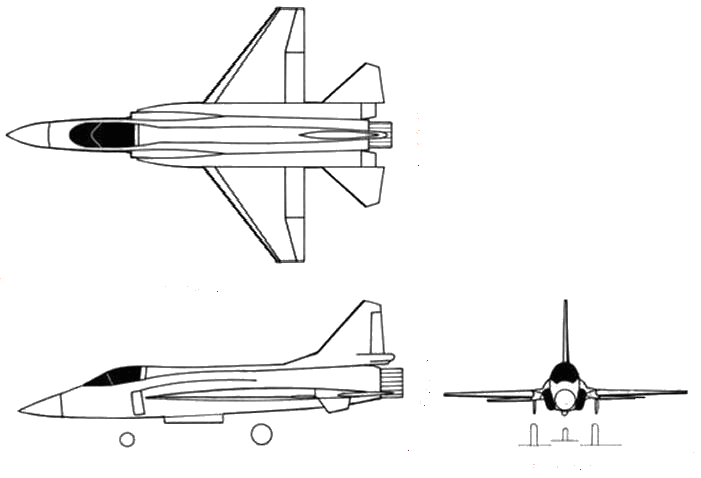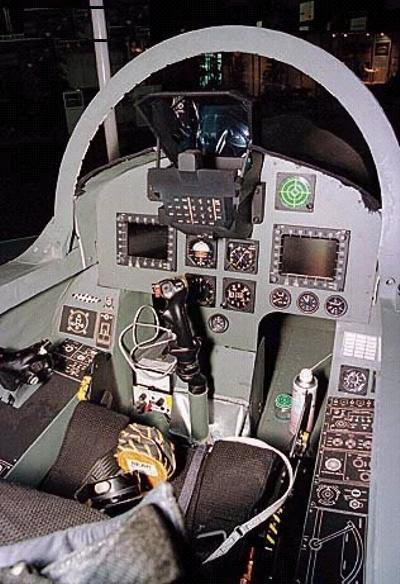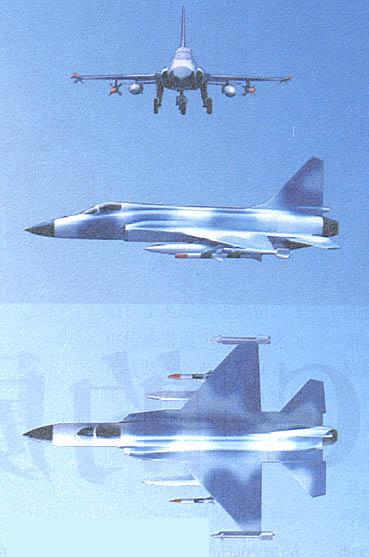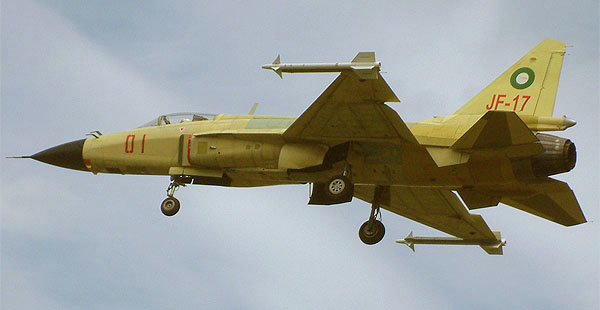|
|
|
SUPER 7 / FC-1 / JF-17 THUNDER |
 |
|
|
|
OVER VIEW / HISTORY |
| |
| The
original project was started in 1986, when china signed an agreement
with an American company Grumman to modernize china's aircraft J-7(F-7
/ Mig-21),
the agreement worth $550 million was then cancelled. China then
contacted Pakistan in Feb 1992 for the joint venture and was accepted
and started in Oct 1994. Pakistan shared half of its cost. Pakistan is
expected to be the initial user of this plane and has planned to
acquire 150 - 200 aircraft. Russia's Mikoyan Aero-Science Production
Group (MASPG) is also providing technical expertise, it is also
believed (in west) that super 7 is successor of the dropped Mig 33
aircraft. In the development of the plane several European countries
are being considered as suppliers for the avionics. It uses Russian
RD-93 turbofan, which is an upgrade of RD-33, this RD-93 turbofan is
also used in Russian MiG-29. The aircraft will also be fitted with an
in-flight refueling probe and a deck arrester hook. This increase its
sticking range far beyond 3,000km. It is fitted with fire control radar
Grifo S7, for the export
version include state of the art GEC-Marconi Blue Hawk, Thomson-CSF
RDY, Phanzotron Kapyo and Fiar Grifo S7. In addition to that it will
include a 25° field of view HUD, two multi-functional displays and
INS/GPS ( Global Positioning System). The aircraft is designed
to be fitted with vast array of weaponry. Weapon load includes short
and medium range AAMs (Anti-Air Missiles) like AIM-9P/PL-9/Magic 2
and PL-11/Aspide/AIM-7E etc, will also be equipped
with SD-10 SD-10 active radar-homing AAM which has been under
development at LETRI/607 Institute. SD-10 is
expected to be in the same class as AMRAAM and the missile may have
evolved from the earlier AMR-1/PL-12 design. Sd-10
AAM is specially designed for FC-1 aircraft In addition to that it includes new FBW
system and a true BVR attack capability. The first prototype was
completed in June 2003 and performed a taxi test in July 2003, It
first flew on 3rd September 2003. The plane was
First known as FC-1, Super 7. and now it is also given the name
JF-17 (Joint Fighter 17) "Thunder" for Pakistan Air Force (PAF). |
| |
|
SPECIFICATIONS |
|
Crew |
One |
|
|
|
Wing Span |
9 m |
|
|
|
Length |
14 m |
|
|
|
Height |
5 m |
|
|
|
Weight |
Empty 6,321 kg; Normal take-off: 9,100 kg |
|
|
|
Max. TO. Weight |
12,700 kg |
|
|
|
Max. Weapon Load |
3,600 kg |
|
|
|
Max. Speed |
1031 knots, Mach 1.8 |
|
|
|
|
|
Range |
Ferry range 3,000 km; Operational
Radius 1,352 km, 864 nautical miles, |
|
|
|
Service Ceiling |
16,500 m |
|
|
|
T-O Run |
500 m |
|
|
|
Landing Run |
700 m |
|
|
|
+G. Limit |
8.5 |
|
|
|
Armament |
23 mm GSh-23-2 twin-barrel cannon
6 - PL-7 AAM
6 - PL-10 AAMs
AGMs, bombs |
|
|
|
| |

Mock up of Super 7 standing at PAF base Kamra. |
|
|


Views of Cockpit of JF-17, FC-1, Super 7. |
|
|

A coloured view of JF 17 from all angles |
|
|

JF-17 During its First Test Flight. |
|
|
|
|
|
|
|